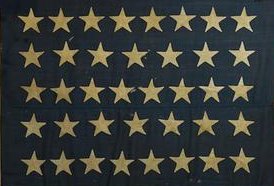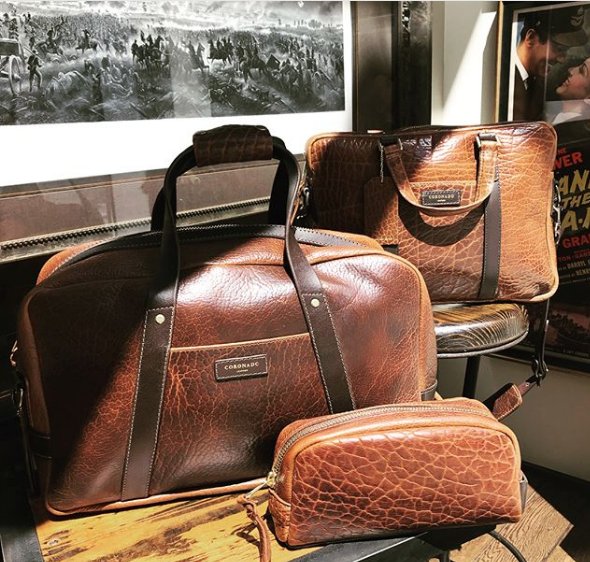Proclaiming Freedom: Lincoln's Hand in History
On January 1st, 1863, President Abraham Lincoln changed the course of American history with the signing of the finalized Emancipation Proclamation. That morning, before the traditional White House New Year’s Day celebration, Lincoln sat down at a table with the Secretary of State William Seward. Giving the document a final look over, Lincoln completed his final edits and signed the work that would declare that "all persons held as slaves... shall be then, thenceforward, and forever free." It was Lincoln himself who recorded that momentous event with a single phrase[1]:
"I never, in my life, felt more certain that I was doing right than I do in signing this paper."
Whether it was Lincoln’s inner voice telling him to ‘do the right thing,’ or the more literal voices of his confidants pushing him in the direction of abolition, the Emancipation Proclamation remains as a prominent example of a President’s executive power during war. That decision by Lincoln to write and issue the Emancipation Proclamation was a definitive act in support of the Union, and more importantly, abolition. Moreover, the Proclamation changed the focus of the war, with the aim to ‘preserve the Union’ put on the back burner, while the battle between abolitionists and anti-abolitionists took the reins. It was Lincoln, perceived by northern voters as a humble lawyer from the west frontier, who assessed the needs of the American public during its bloodiest war and made the proper steps towards preserving the country.
 Abraham Lincoln's signature from the Facsimile Emancipation Proclamation
Abraham Lincoln's signature from the Facsimile Emancipation Proclamation
Spreading the Word
The Emancipation Proclamation was drafted multiple times, with the Preliminary Proclamation being issued on September 22, 1862, only days after the Union victory at the Battle of Antietam. Many newspapers, such as Washington Evening Star, used the drafted Preliminary Proclamation to spread the word. Just like anything, the document received mixed reviews from the general public. Of course, this was mostly due to rivaling opinions between northern and southern readers and publishers. Even still, news was spreading. The message of the document rang true on New Year’s Day of 1863 when the finalized document went to the public. The final draft of the Emancipation Proclamation was transmitted line per line via telegraph around 8pm on New Year’s Day[2].
It was the Union’s intent to spread the word of the Proclamation being written and instituted, thus inspiring facsimile lithographic prints to be made of the document. Pictured below is one of the works done by lithographic artist Edward Mendel as an effort by the General Treasury to raise money for the United States Sanitary Commission and the Soldiers' Home in Chicago.
Thomas B. Bryan, President of the Soldier's Home, commissioned the work of Mendel who worked out of Chicago, Illinois in 1863. The work is now for sale in The Great Republic's DC shop.

1863 "Facsimile Emancipation Proclamation" Broadside by Edward Mendel
The work has multiple eye-catching features, such as a portrait of Lincoln on the left side and another facsimile of the October 26, 1863 letter written by President Lincoln to the "Ladies having in charge of the North Western Fair." At the base, on the left-side corner, is an authentic stamp and written phrase declaring the document's authenticity as a lithographic facsimile.
Lincoln’s Image

President Abraham Lincoln Original Oil-on-Canvas Portrait, Circa 1870.
This work, currently in The Great Republic’s DC shop, was painted by an unknown artist. Dating circa 1870, the work was completed shortly after Lincoln's assassination by John Wilkes Booth in 1865. The portrait was painted in honor of Lincoln’s great feats, such as the Emancipation Proclamation, and represented him with great attention to detail.
Lincoln was living in the age of early photography—even for honest Abe, image was everything. It was Mathew Brady, celebrity photographer of the mid 19th century, who transformed Lincoln into the well-known, friendly presidential candidate so many Americans fell in love with. Brady did this by playing up Lincoln’s distinct features, such as his evident cheekbones, excellent posture, and tidy appearance, which mimicked even earlier portraiture of George Washington. These features continued to be accentuated post-Civil War and after Lincoln’s death by both famous and unknown artists.
This portrait of Lincoln both memorializes him and relays his strengths through its rendering. Taking a look at a detail photo of the piece, Lincoln's features are not heavily idealized. His age shows in his bilabial folds and creases near his eyes. Rather than hide his age, this artist chose to highlight the fact that Lincoln was in a position to transform the state of the country after years of experience. Thus, to learn more about Lincoln's his hand in history, one can just take a look at the way he was depicted in art by his contemporaries.

Detail Photo from the President Abraham Lincoln Original Oil-on-Canvas
[1] Franklin, John Hope, The Emancipation Proclamation: An Act of Justice. National Archives Prologue Magazine. Vol. 25, No. ,1993.
[2] Ibid.






